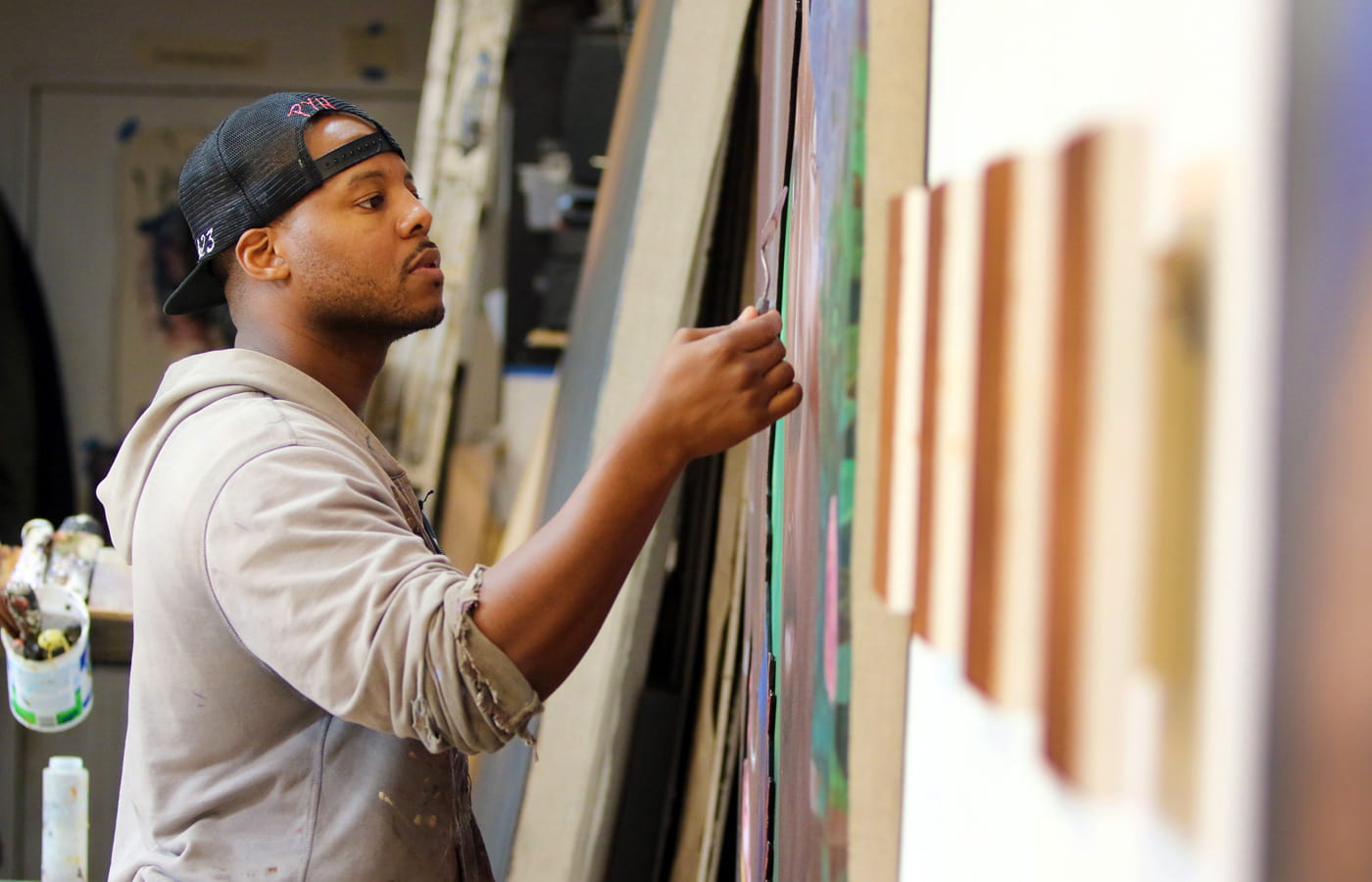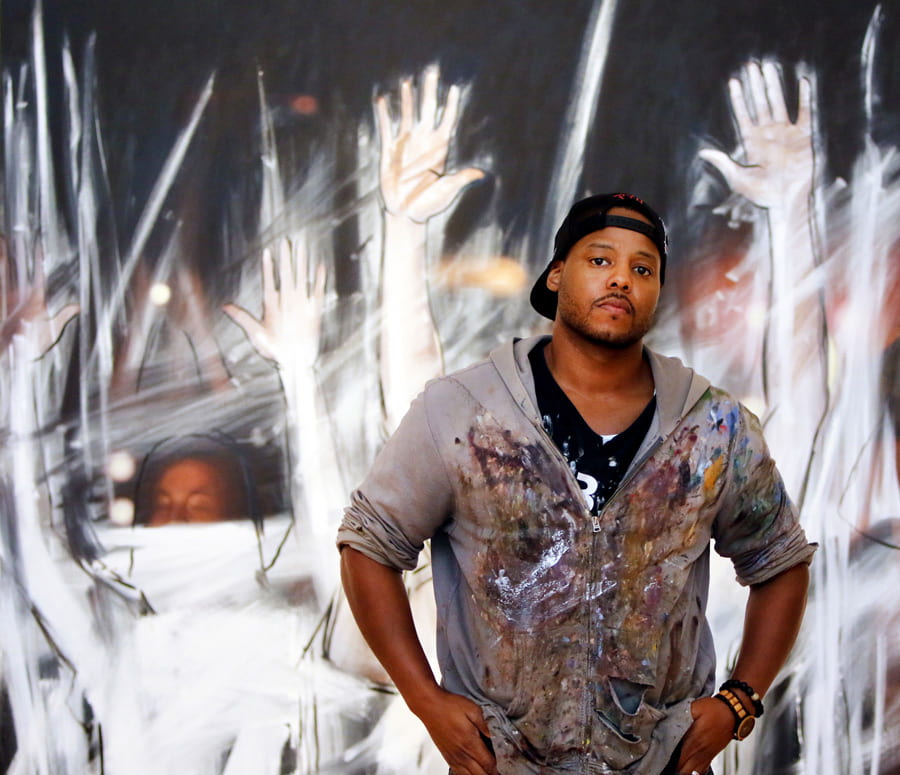Artist and 2018 MacArthur Fellow Titus Kaphar

Titus Kaphar, a painter and sculptor who addresses the lack of representation of people of color in the history of Western art, at his studio in New Haven, CT. (Photo by John D. and Catherine T. MacArthur Foundation)
In 2017, while giving a TED Talk, artist, painter and sculptor Titus Kaphar unveiled a replica of a 17th-century Frans Hals painting that depicted a white family with a black figure in the shadows. As he spoke, Kaphar painted swaths of white across the canvas, obscuring the prominent characters and directing the focus to the hidden figure. The artist, who received a 2018 MacArthur “genius” grant, says art can be used to shift perspectives. As the president and a founder of NXTHVN, an arts incubator in New Haven, Connecticut, which provides resources for artists, Kaphar sees painting as a language that offers diverse perspectives on history, justice and change.

Titus Kaphar stands in front of his piece entitled “Another Fight for Remembrance“ at the Yale University Art Gallery, New Haven, CT. (Photo by John D. and Catherine T. MacArthur Foundation)
“We can’t erase this history; it’s real,” said Kaphar, ’01 BFA Art/Pictorial Arts. “We have to know it. I want to make paintings and sculptures that are honest, that wrestle with the struggles of our past but speak to the diversity and the advances of our present.”
One example of his aesthetic is The Jerome Project, which features reimagined mug shots of imprisoned black men named Jerome on gold leaf and dipped in tar. The project began when Kaphar Googled his father Jerome, who had been incarcerated, and was amazed to find 99 other men of the same name who had been imprisoned. By investigating the prison-industrial complex and the incarceration of black men, Kaphar challenges the way people of color are represented in art. In 2014, Time commissioned him to respond to protests in Ferguson, Missouri, following Michael Brown’s death. The resulting painting, entitled “Yet Another Fight for Remembrance,” features African-American men with hands held high, faces and bodies concealed by white paint.
“The act of painting itself becomes a fight to remember the names of all the young black men who were taken too soon,” said Kaphar in a 2014 Time interview. “A fight to remember that when this issue disappears from the media, it is not permission to forget. A fight to remember that change is possible.”




Fantastic story about an artist who deserves wide recognition. Thank you!